Here is a short fish review.
I have never written any blog or reviews earlier, hence pardon my writing style / flow.
As mentioned above I started my fishkeeping hobby 4 months ago, when I lost interest in cycling. I felt this was a hobby which will die pretty soon. But it evolved and I am getting more inclined to it. I feel this is going to be a longer hobby than I imagined.
Whatever data I have is just with my 4 months of experience and I could be wrong in many places. Please forgive if so.
(Pictures were taken at night, so kindly excuse the quality as some of them will be blurred and I couldn't get the perfect frame)
This is a very basic, cost-effective and budget setup. But, it is good for beginners and one can upgrade as and when the hobby becomes a passion.
I will explain the various fish I have and at the same time, brief you about the various options available now in India as well as the fish care and support systems required.
In earlier times, we had very few options such as Goldfish, Gaurami, Carp, Oscar, Parrot Fish, etc. But now, a lot of imported fish is available at every store with lot of variety inside the same breed / species.
The most common, colourful, exotic species which we can have in our house are Cichlid, Discus, Flowerhorn and Arowana. I am talking about the most affordable, entry level and easy to maintain breeds. I am not considering the salt water stunning, coloured fish and talking only about fresh water fish. And all the breeds mentioned above are group-oriented / territory-oriented breeds i.e. all these breeds (except for Discus) are very, very aggressive and will easily fight till death with each other if put together in the same tank.
But going against odds, I purchased Cichlid and Flowerhorn as well and made it a community tank (where different breeds / species co-exist). I introduced all the fish together when they were very small. It sort of worked. Even though initial fights were there and my Flowerhorn always sported “crew-cut” as its tail and fins were half bitten off, now all shout peace and harmony.
All these fish prefer normal fish food, live worms, dry worms, dry shrimps and will be very happy if we can feed them some life fish (which I don’t do).
I have a 3 ft x 1.5 ft x 1.5 ft tank (due to space constraints in my home), which houses approximately 180 litres of water.
In the Cichlid breed, these are the variants I currently have and my fish seller adds a different coloured one every month to his stock. So, there are lot of variants in Cichlids.
1) Electric yellow Cichlid
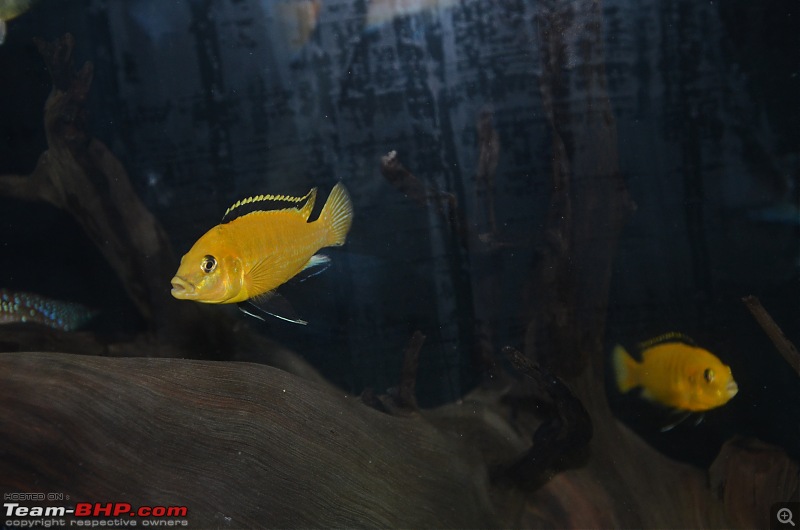

2) Red Jewel Cichlid

3) Frontossa Cichlid

4) Electric blue Cichlid
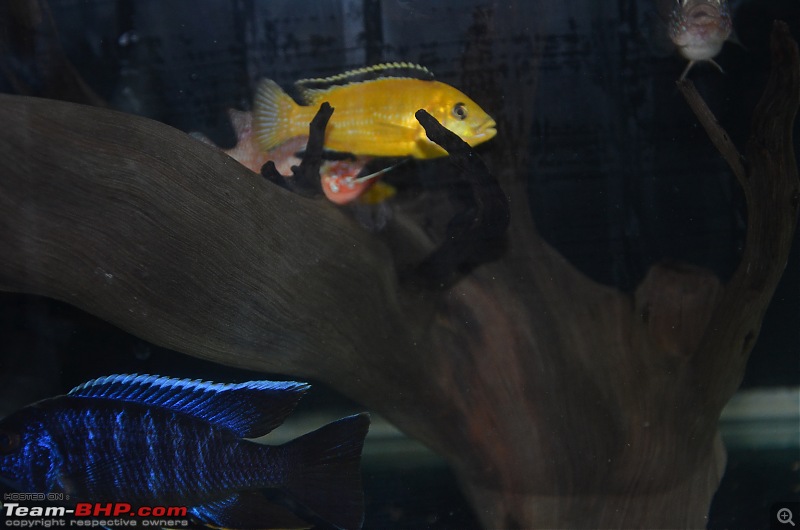
5) Giraffe Cichlid

6) Hybrid Cichlid



I have one short-body Flowerhorn (normal version of Flowerhorn will grow up to 8 inch plus, whereas short body will not grow beyond 4 – 5 inches)
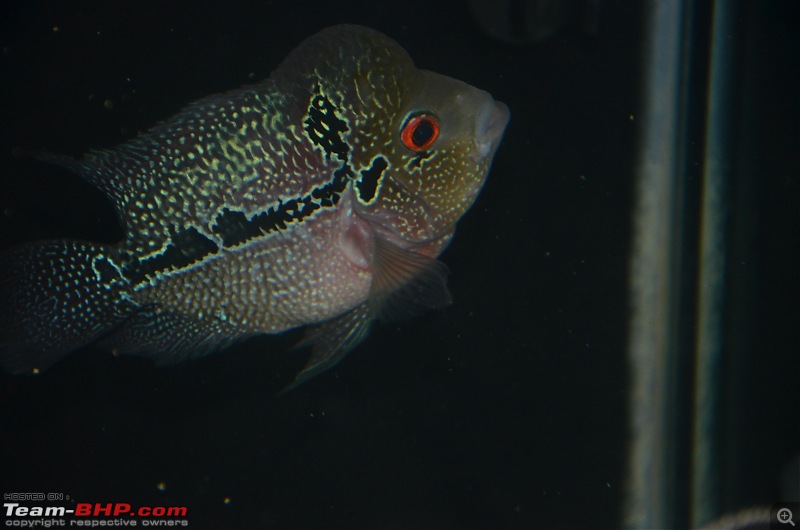
Flowerhorns, if trained properly are the most entertaining and involving fish to be with. They have a huge hump on their head, which is made of fat. My Flowerhorn sometimes allows me to pat / touch on his head. The head is made of jelly-like fat and is very soft. So I ensure that I don’t press it, but touch it very, very gently.
This is my full tank set up.

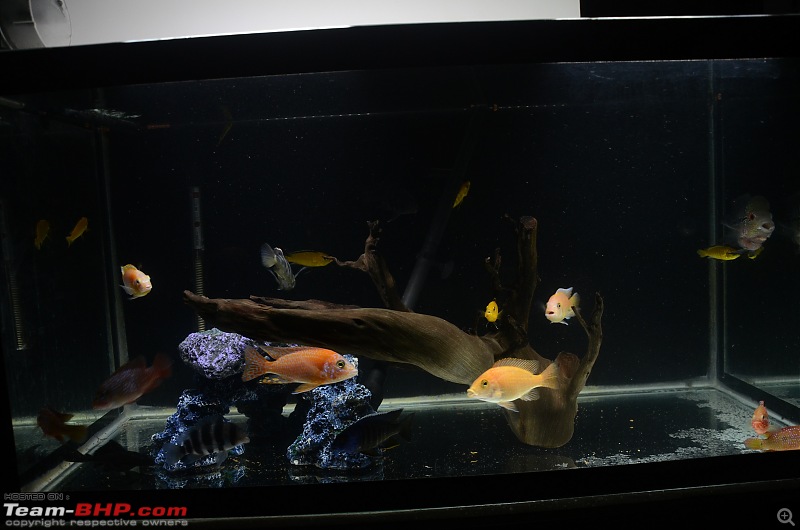
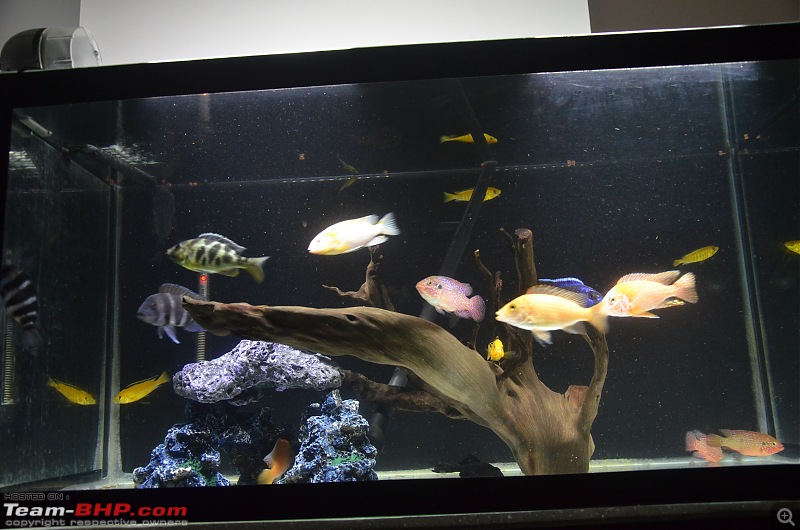
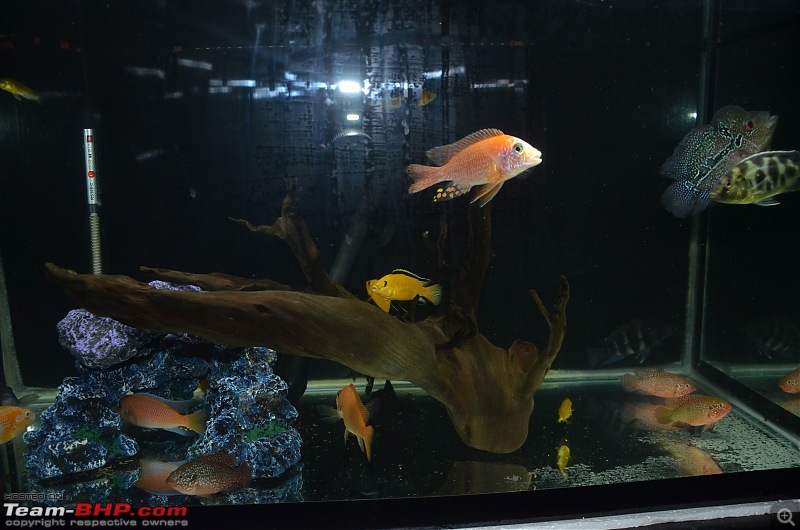
Fish care / accessories and support system required:
We need to have strong filters if we are going for Cichlid as they are very messy fish and let out a lot of excreta. This is the water filter / pump. I went with what my fish seller told me and purchased this brand (SunSun). This has to be kept on 24x7 as long as the aquarium is there.
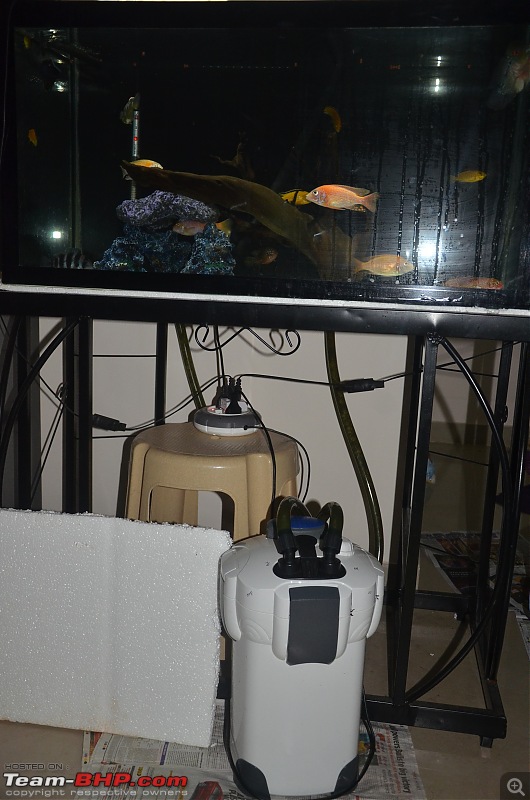
Water will be taken through an inlet and pumped through these back into the tank, which also creates oxygen as it falls.

Cichlid hate live plants and they will bite them off. So don’t keep any live plant inside a Cichlid tank. We can keep either a bare bottom (easy to maintain) or sand as substrate. I kept pebbles initially, but my Oscar fish (they died) in an attempt to lunge, smashed the pebble against the fish tank and it broke. So, I suggest not to keep pebbles in Cichlid tanks.
One heater is mandatory in winter times to maintain a constant temperature and has to be kept on during nights as too much of variation in temperature is not taken well by the fish.
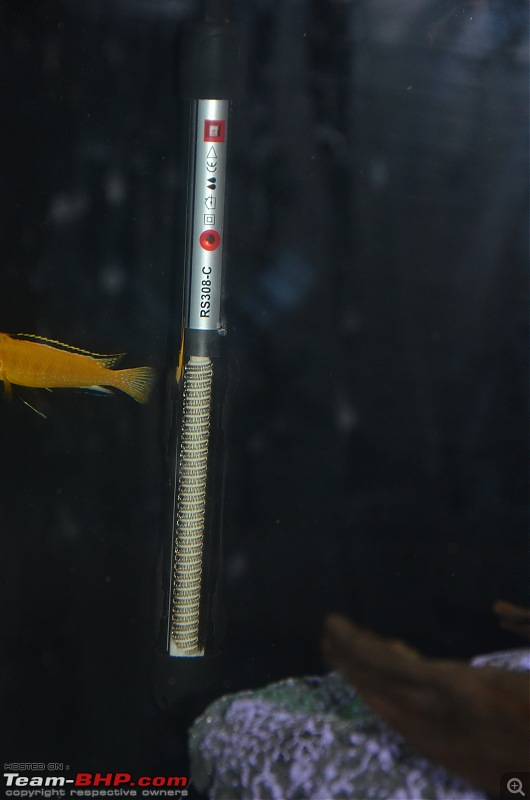
50% water is to be changed every 2 weeks and 80% every month. Put antibiotics / parasite syrups after every water change to avoid any sort of infection.
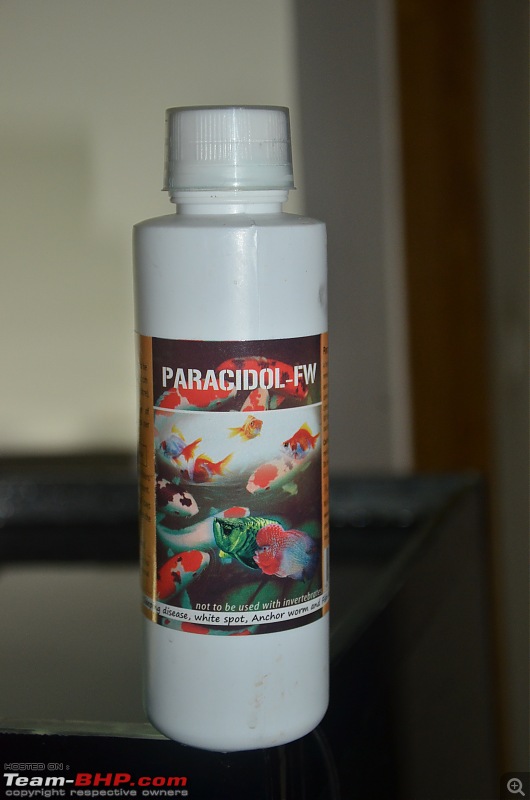

Add one handful of rock salt every time you change the water as it has a lot of useful minerals / proteins required for the fish.

Put a light to keep the water illuminated. And last, keep one automatic feeder, which takes care of the food even if no one is there at home for weeks. It works on battery.
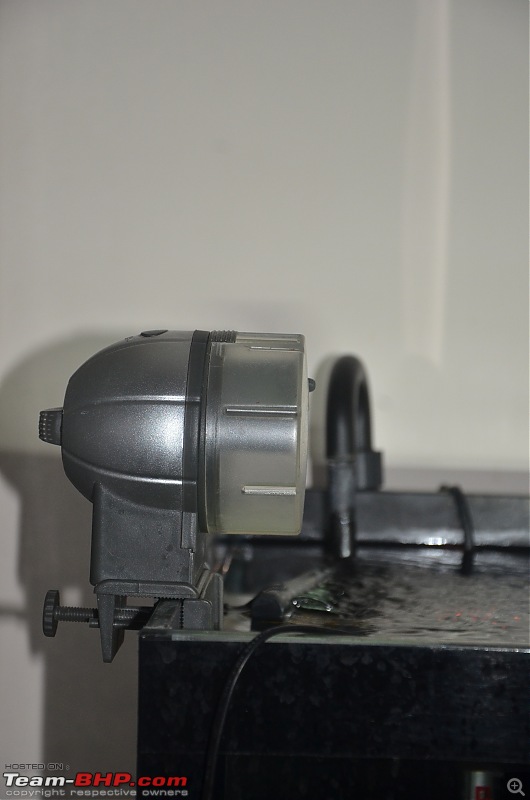
 (10)
Thanks
(10)
Thanks
 (1)
Thanks
(1)
Thanks

 (1)
Thanks
(1)
Thanks


























 . Wow good.
. Wow good.